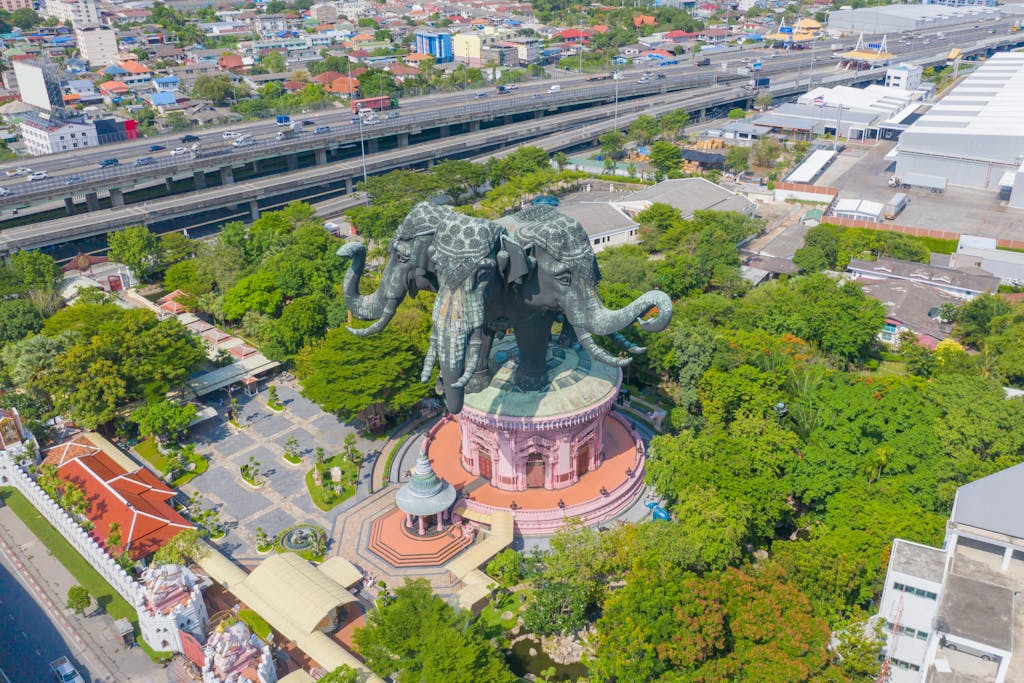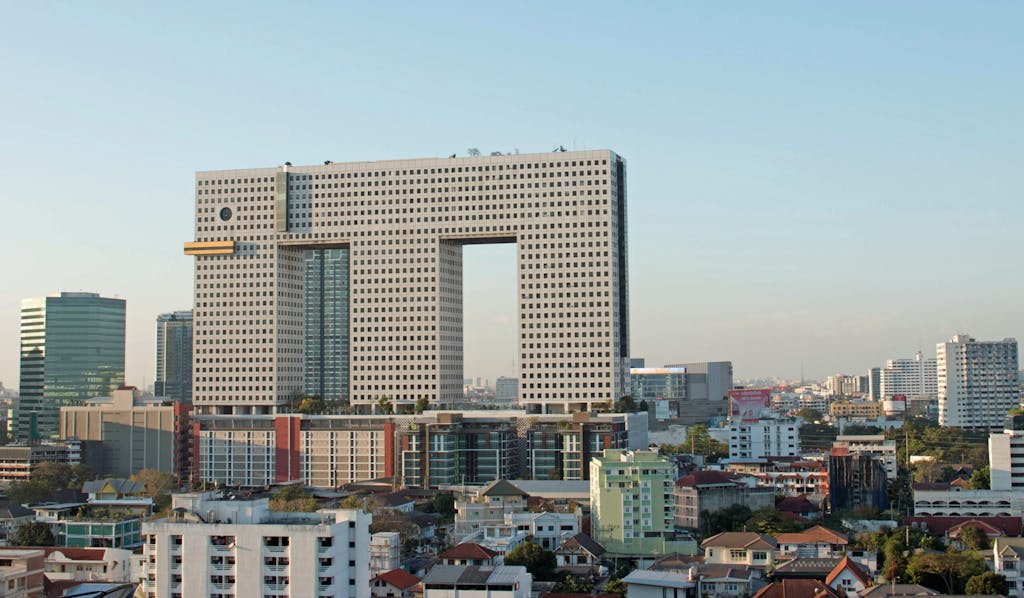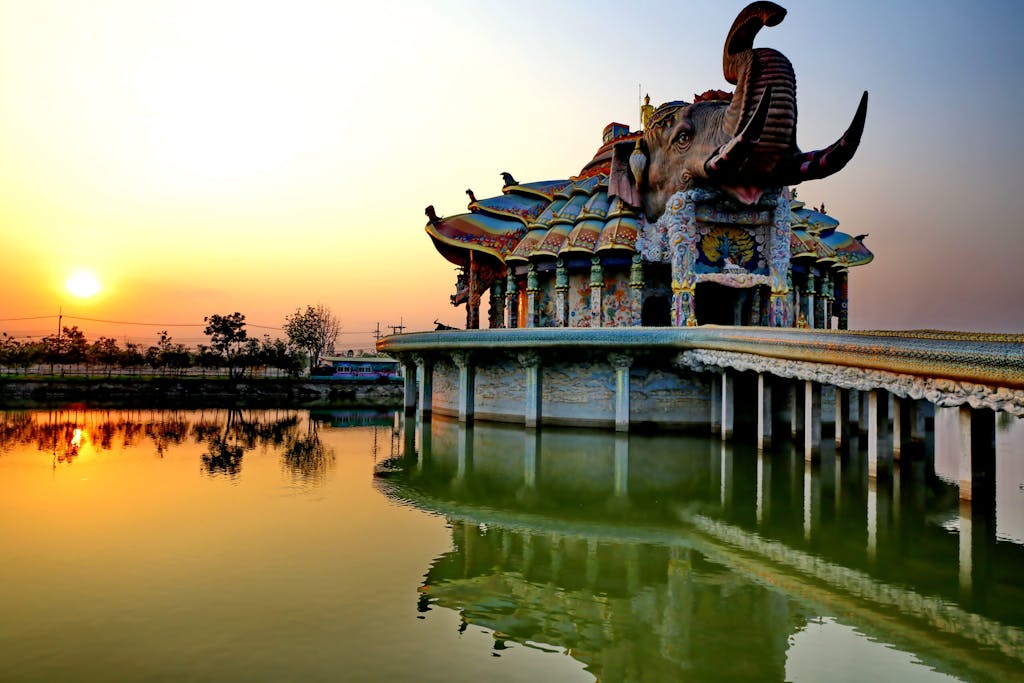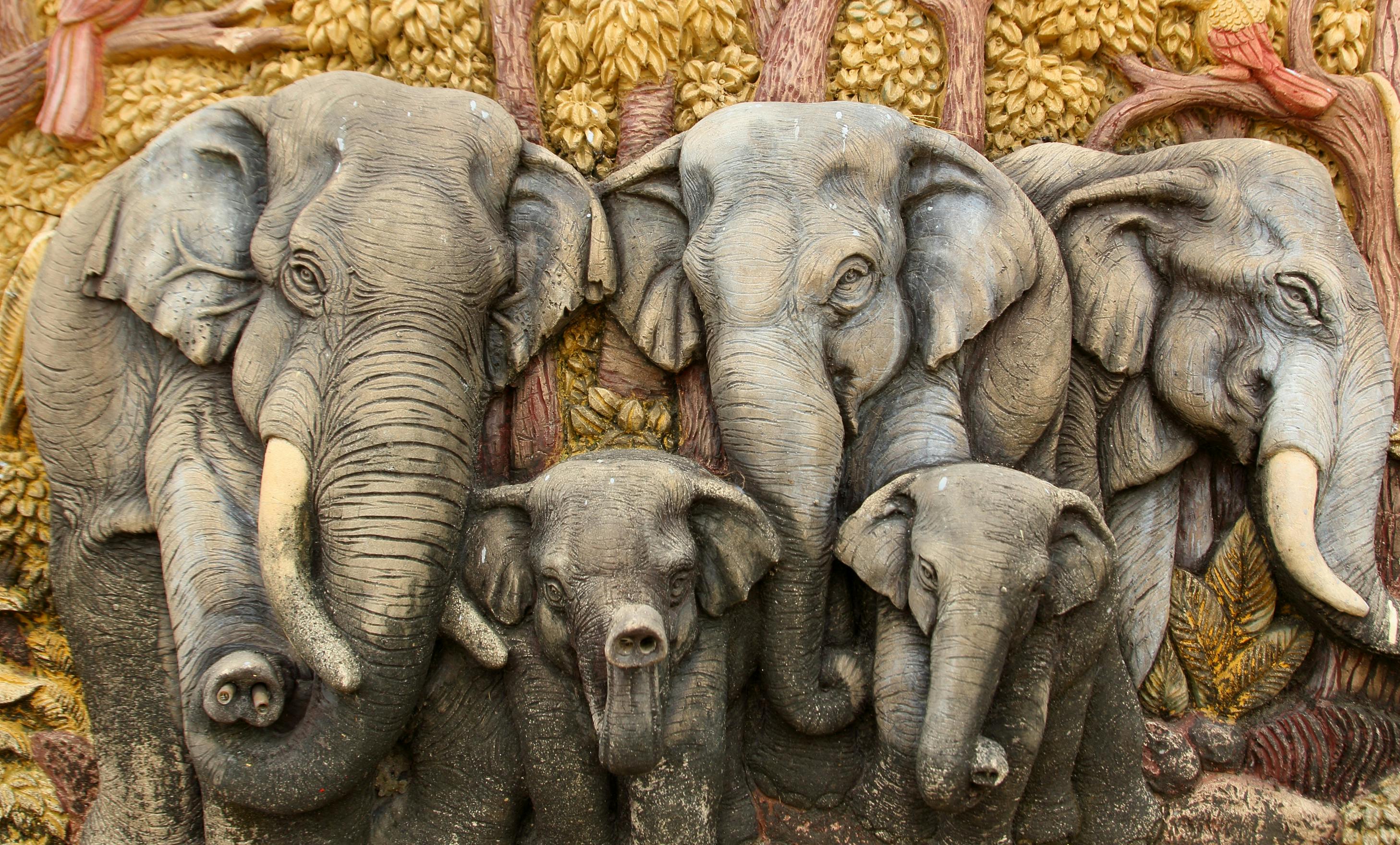On Your Thailand Trip, Keep an Eye Out for Elephants in Bangkok and Beyond
Elephants have marched through Thailand’s arts, culture, legends and history for centuries. This national symbol of Thailand is depicted in sculptures, paintings, textiles, wall hangings, even Chang beer, whose logo is two elephants. (“Chang” is Thai for “elephant.”) Moreover, seeing elephants ranks among the top things to do in Bangkok and throughout a trip to Thailand.
Admired for their strength, longevity and intelligence, elephants also were used in warfare for centuries, as well as for hauling logs and farm produce. A white elephant on a red background appeared on Thailand’s national flag from 1855 to 1916. Even today, ships fly a white elephant on the Naval Ensign of Thailand flag.
Historically, white elephants are symbols of the power of the king, says Pattaratorn Chirapravati, professor of Asian art history at California State University, Sacramento. “The more elephants a king has, the more power he has, since they show how prosperous his kingdom will become,” she adds.
The term “white elephant” originated in Thailand. White elephants (which were more pinkish) were rare and considered sacred. If the king was angry with a courtier, he gave him a white elephant. Because these animals were forbidden to work, couldn’t be given away and caring for them was expensive, such a “gift” meant financial ruin. The phrase became a synonym for something useless.

In the 14th century, legend has it that a white elephant chose the site for one of Thailand’s major Buddhist temples, Wat Phra That Doi Suthep, just west of Chiang Mai on a mountaintop in northern Thailand. The elephant was released into the hills, began climbing, trumpeted three times, turned in three counterclockwise circles, then knelt. The King ordered that the temple be built on that spot.
A 300-step outdoor stairway, flanked by spectacular mosaic-sculptured sacred Naga serpents, leads to the temple and its gold-plated chedi, similar to a stupa, on the upper terrace.
Elephants in temples and museums

Among the top things to do in Bangkok is visiting the Temple of the Dawn, Wat Arun. It is probably the city’s most striking temple and a prominent landmark in its skyline, thanks to its 210-foot-tall Khmer-style pagoda surrounded by four smaller pagodas on the Chao Phraya River.
Four statues of Erawan, the three-headed elephant that is the traditional vehicle of Indra, the Hindu god of thunder and rain, are on the second terrace of the temple. These pagodas are adorned with thousands of pieces of porcelain and colored glass. (Statues of Hindu gods are common at Thai Buddhist temples; here’s why.)

The Erawan Museum, one of Bangkok’s most impressive museums, features a huge three-headed elephant sculpture, about 150 feet tall, atop a pink pedestal above the museum and Buddhist shrine in the suburb of Samut Prakan.
The museum’s exuberantly ornate interior houses a private collection of Thai and Chinese antiquities and art on three floors, which signify the underworld, Earth and the heavens. You reach the shrine on the top floor, inside the elephant’s belly, by climbing a staircase inside one of the legs (or taking an elevator) from the ground floor, which has a magnificent round stained-glass ceiling.
Elephants in art, design and fashion

In contemporary art, design and fashion, elephants remain ubiquitous. Silk pillow cushions, tablecloths and men’s and women’s clothing — scarves, ties, dresses, and tablecloths and more — are adorned with elephant designs sold by Jim Thompson, the high-quality Thai silk shop chain. The Jim Thompson House, the home of the chain’s founder, an American expatriate, contains Thompson’s fabulous collection of Asian art and antiques in six traditional teak houses.
For his efforts in reviving the Thai silk industry in the 1950s and ’60s, Thompson was honored with the Order of the White Elephant award.
In 2015, the Princess of Thailand launched an exhibit of 999 elephant sculptures by Thai artists at shopping malls in Bangkok to raise awareness about the dwindling wild elephant population, and to honor the King’s role in their conservation. At the Erawan Shrine, an open-air shrine on a busy street corner in Bangkok’s Sukhumvit district, people pray for good fortune and make offerings of tiny wooden elephants or garlands of yellow flowers.
The city even boasts the Elephant Building, a 335-foot-tall office/residential tower shaped like a flat Cubist elephant. Arun Chaisaree, a real estate magnate and collector of more than 2,000 elephant art objects), and architect Ong-ard Satrabhandhu collaborated on the building, which was completed in 1997.
You’ll find murals of Thai Kings riding elephants into battle at many temples. In Ayutthaya, formerly the Thai capital that’s 50 miles north of Bangkok, a mural in Wat Suwandaram’s Ordination Hall shows King Naresuan defeating Burma’s Crown Prince in 1592. (Burma conquered Ayutthaya in 1767.)

Then there’s the elephant-shaped temple Wat Ban Rai, where a 520-ton elephant head with raised trunk tops a ceramic mosaic turtle in the middle of a pond, 150 miles northeast of Bangkok in Isaan province. A national park is named for Indra’s mount, Erawan National Park, known for its seven-tiered waterfall, about 130 miles northwest of Bangkok in Kanchanaburi province.
In 1862, President Abraham Lincoln graciously declined a gift of elephants from the King, who felt sorry for the sad lack of elephants in the U.S. and recommended their usefulness in settling the frontier and as work animals. His letter (he accepted gifts of a sword and photograph) is in the National Archives in Washington.
Elephants are known for never forgetting. But in Thailand today, they’re the ones that will never be forgotten.
Dreaming of Thai temples and palaces? These Asia itineraries can make visiting them a reality.
